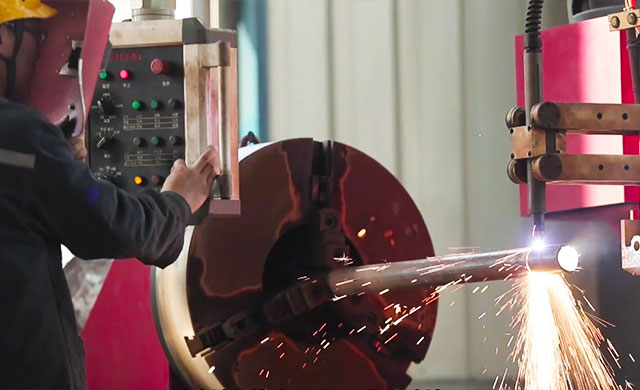
Dec . 04, 2024 09:24
Back to list
lpg equipment
Understanding LPG Equipment Essential Components and Applications
Liquefied petroleum gas (LPG) has gained significant popularity as a source of energy across various sectors due to its efficiency and versatility. LPG is commonly used for heating, cooking, and as a fuel for vehicles. The effectiveness of these applications greatly depends on the quality and functionality of LPG equipment. This article delves into the essential components of LPG systems, their applications, and safety considerations.
Key Components of LPG Equipment
1. LPG Cylinders These are the most recognizable component of LPG equipment. Typically made from high-grade steel or aluminum, LPG cylinders store the gas at high pressure. The size of these cylinders can vary, with common residential cylinders being 14 kg to 47 kg in capacity. Each cylinder is equipped with a valve that controls the release of gas, ensuring safe handling and usage.
2. Regulators A regulator is crucial in an LPG system. It serves the purpose of reducing the high pressure from the cylinders to a usable level. Proper function of the regulator ensures a consistent flow of gas, which is essential for appliances like stoves and heaters. There are various types of regulators, including single-stage and two-stage regulators, each serving different applications.
3. Hoses and Fittings LPG hoses are constructed to withstand high pressure and are typically made from rubber or thermoplastic materials. These hoses connect the cylinders to appliances and are essential for transporting gas safely. Quality fittings are equally important, as they ensure leak-proof connections, preventing gas escapes that could lead to safety hazards.
4. Burners and Appliances The type of burner used with LPG can vary based on its application. For cooking, stove burners are designed to provide efficient heat transfer. In industrial applications, specialized burners for heating or drying processes are employed. It is vital that these appliances are rated for LPG use to ensure safety and efficiency.
5. Storage Tanks and Distribution Systems For commercial and industrial applications, larger storage tanks may be used to hold LPG on-site. These tanks need to comply with specific safety standards and regulations to minimize risks. Distribution systems then transport the gas from these tanks to various points of use, often involving a network of pipes and valves.
Applications of LPG Equipment
LPG is used in various sectors, making the equipment associated with it highly versatile.
- Residential Use In homes, LPG equipment is primarily used for cooking, heating, and hot water generation. Many households prefer LPG for cooking because it provides instant heat and precise temperature control.
lpg equipment

- Commercial Use Restaurants and catering services heavily rely on LPG for cooking. Additionally, hotels and resorts utilize LPG equipment to provide hot water and heating to guests.
- Industrial Applications Industries often use LPG for processes that require high temperatures, such as metalworking and plastic molding. Its use as a fuel in forklifts and other industrial vehicles is also becoming increasingly popular as companies look for cleaner alternatives to diesel.
- Agricultural Use In agriculture, LPG is used for crop drying, heating greenhouses, and even powering irrigation systems. Its efficiency helps farmers increase productivity while minimizing costs.
Safety Considerations
While LPG is a highly effective fuel source, safety must hold paramount importance during its storage and use. Key safety measures include
- Regular Inspections LPG equipment should be regularly inspected for leaks or signs of wear and tear. Leak detection solutions, such as bubble solutions, are effective for identifying gas escapes.
- Proper Ventilation Areas where LPG is used must be well-ventilated to prevent the build-up of harmful gases.
- Training and Awareness Users of LPG equipment should be trained on its proper usage and emergency procedures to follow in case of a gas leak or fire.
Conclusion
LPG equipment plays a vital role in ensuring the efficient and safe use of liquefied petroleum gas across various applications. Understanding the components and their functions, along with adhering to safety standards, is essential for maximizing the benefits of LPG. As the demand for cleaner energy sources continues to grow, the importance of reliable LPG equipment will only increase, paving the way for innovations and improved safety measures in the industry.
Next:
Latest news
-
Safety Valve Spring-Loaded Design Overpressure ProtectionNewsJul.25,2025
-
Precision Voltage Regulator AC5 Accuracy Grade PerformanceNewsJul.25,2025
-
Natural Gas Pressure Regulating Skid Industrial Pipeline ApplicationsNewsJul.25,2025
-
Natural Gas Filter Stainless Steel Mesh Element DesignNewsJul.25,2025
-
Gas Pressure Regulator Valve Direct-Acting Spring-Loaded DesignNewsJul.25,2025
-
Decompression Equipment Multi-Stage Heat Exchange System DesignNewsJul.25,2025

